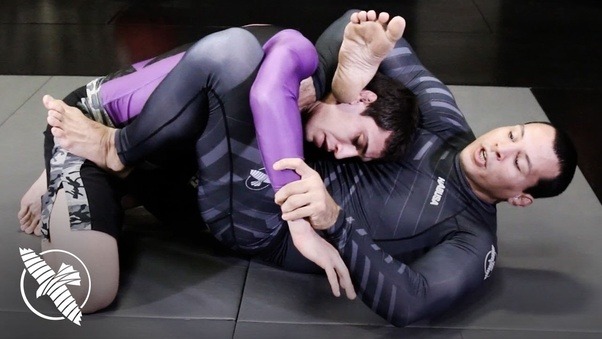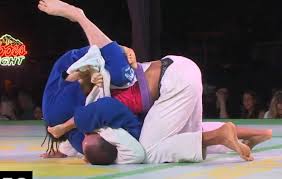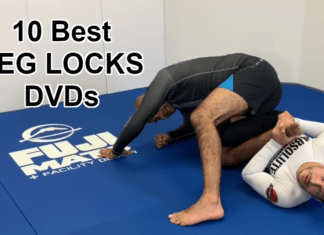
Be flexible and you’ll have no troubles in BJJ. Once again, an absolute statement. God, these absolutes in Brazilian Jiu-Jitsu are really starting to get on my nerves. Yeah, begin flexible is good. It keeps you moving along finely, keeps joints healthy, makes life comfortable. In terms of Jiu-Jitsu, flexibility is a good thing. In fact, it is a great thing, particularly when it comes to shoulders and hips. However, there’s a point of diminishing returns, even with flexibility for BJJ.
Being flexible for Brazilian Jiu-Jitsu is one more of those things that have been completely taken out of context lately. If you were to believe everyone that is trying to push their routine, being a contortionist would be the absolute best thing for a BJJ player. Well, it is not. Flexibility for BJJ is just that – an athletic quality for Jiu-Jitsu. As such, it is not something you need to overdo, because it will come to a point where you can actually become too flexible for Jiu-Jitsu. If that is the case, there’s a fix, but why would anyone want to become worse at performing on the mats in the first place?
Do You Need To Be Flexible For Jiu-Jitsu?
If little is good more must be better! This quote sounds great, but there are very few instances in life, and especially combat sports, where it is true. Despite not seeming like it, flexibility is one area where this does not apply. That said, I have to talk about the benefits of flexibility for BJJ first, so that there is a clear distinction between the required amount and going overboard. As BJJ practitioners we tend to be very impatient and go all in, two things that have never proven to really work for us, but somehow persist within us despite it all.

Do you need flexibility for BJJ? Absolutely. In fact, you need to have flexibility in all your joints, with the minimum requirement being a normal range of motions, which is not many people, can boast with nowadays. Moreover, there are some specific joints, like the hips, shoulders, and neck that really do require a bit more attention and work in BJJ. In that sense, if these joints are more flexible than the “usual” you’ll get certain benefits especially when playing guard, or trying to pass the legs. However, they’re far from the necessary requirements to be able to train and excel at Brazilian Jiu-Jitsu. So, after a certain point, flexibility for BJJ becomes more of a perk, than a requirement. Even more so, after another point, it actually turns into a liability.
How Much BJJ Flexibility For BJJ Do You Need?
There’s no easy answer to this question. Everyone is different, both in terms of their build, and their BJJ game. That means people might need more or less flexibility in different areas during different periods of their BJJ journey.
To be honest, if it was down to me, I’d tell you to work on your shoulders. Yeah I know, I didn’t put the hips first. Blasphemy! There’s a point to this, though. When you start realizing how BJJ works, rather than just collecting techniques, which is bound to happen sooner or late, you’ll notice that manipulating the arms is what we’re after in most of the grappling exchanges we do. In short, we either try to keep our elbows to our body (defensively) or try to pry another person’s elbows open (offensively). In both cases, the shoulders do lots of the work, even though it is indirectly compared to the elbows. Moreover, all the positional stuff like Granbying, hip escapes, bridging, etc. really does put a strain on the shoulders as well, even though it may not be apparent. And I haven’t even mentioned submissions and submission escapes.

All in all, you need just as much flexibility, as it is necessary to play different positions. Using the hips as an example, playing a closed guard requires a lot less hip flexibility than playing rubber guard. So, what really determines the level of your flexibility for BJJ, is your game, after you’ve reached a point where you can at least have a normal range of motion of fall joints.
What Happens If You Are Too Flexible?
Which brings us to the subject I actually wanted to touch upon today. Can you be too flexible for Jiu-Jitsu? The short answer is: yes! There is a point where your flexibility will impede your ability to actually grapple with people. While most would argue that increased flexibility just opens up access to weird positions like rubber guard, and buggy chokes, etc, the truth is that those positions carry big risks even under the best of circumstances.

Something that’s more visible on a day to day basis in terms of flexibility for BJJ is the ability to grapple efficiently. Overly flexible joints mean that you lack the strength to build structures that are crucial in grappling Guard retention will actually become much harder against someone that has a solid passing formula if you’re too flexible to be able to defend the guard. The same holds true for your ability to use frames, posts, or any other type of positioning that actually requires joint stability and a certain level of strength. So, before you decide to go full Yoga and start sleeping with your legs begin your own neck, consider the damages this may do to your BJJ game.
In Conclusion
Flexibility for BJJ is actually a tricky subject, You absolutely need it, at least up to the point of obtaining a normal range of motion of all your joints. For certain joints, it is advisable to go past that. The shoulder and hips are a great example. However, you also need to focus on tendon strength, joint stabilization, and isometric strength as well. Flexibility needs to be kept in check with strength training so that you can develop the best possible qualities for BJJ. If begin a contortionist is your goal, then, by all means, try and become as flexible as humanly possible. If you want to grapple, though, you might want to stop before the point of demising returns.
Yoga Nidra for BJJ: Unusual But Extremely Effective Recovery










































